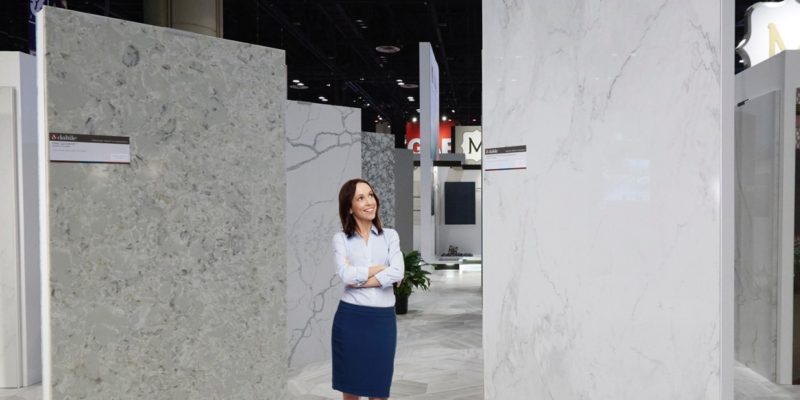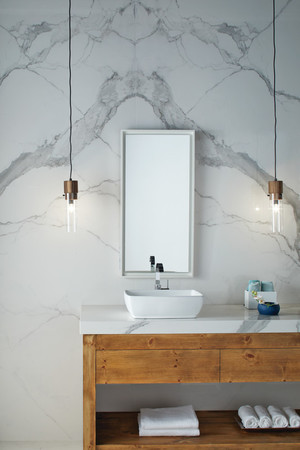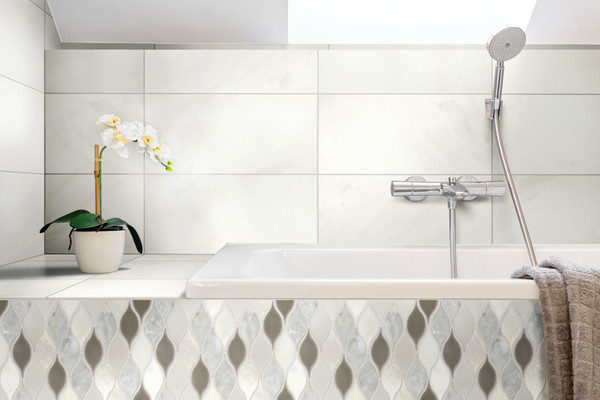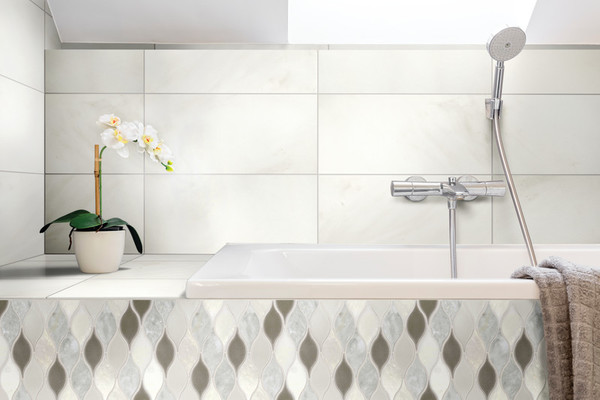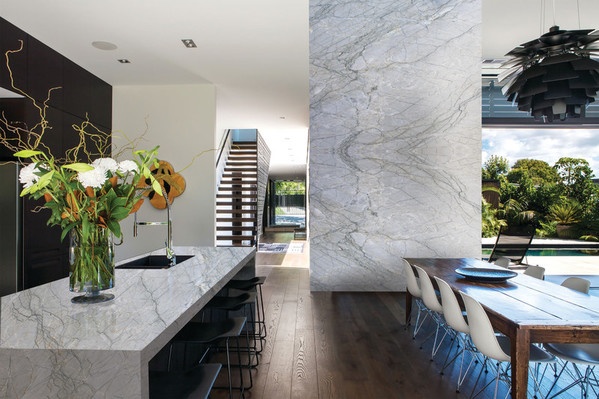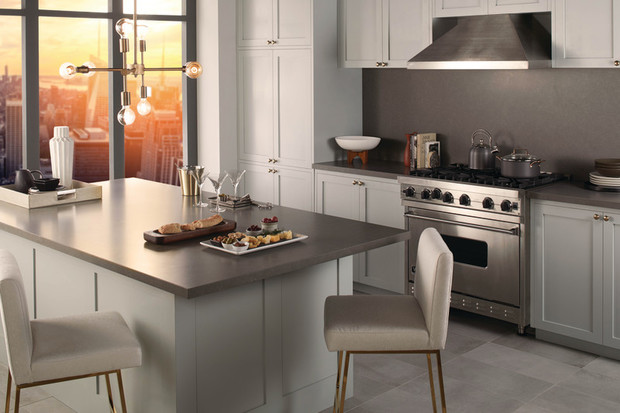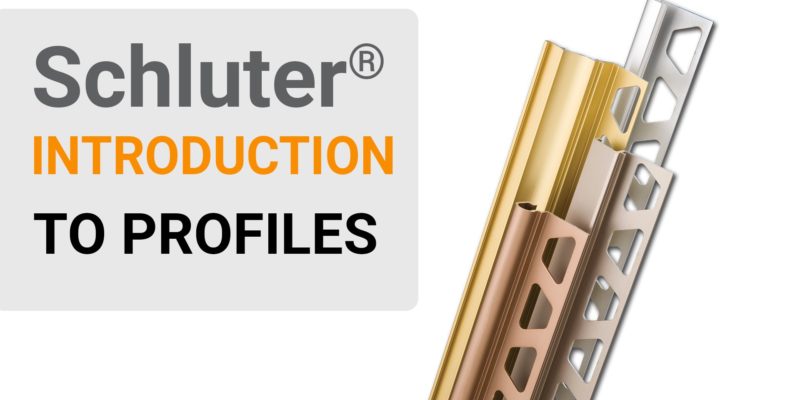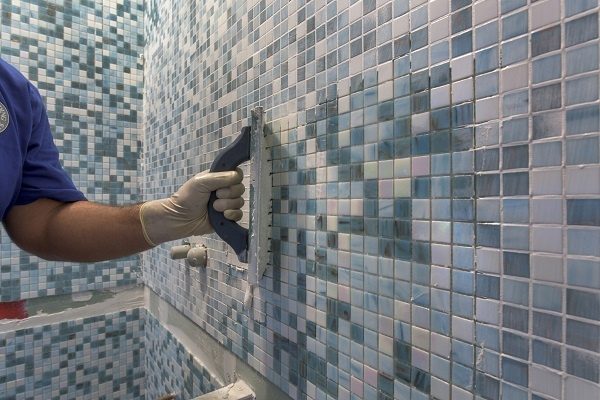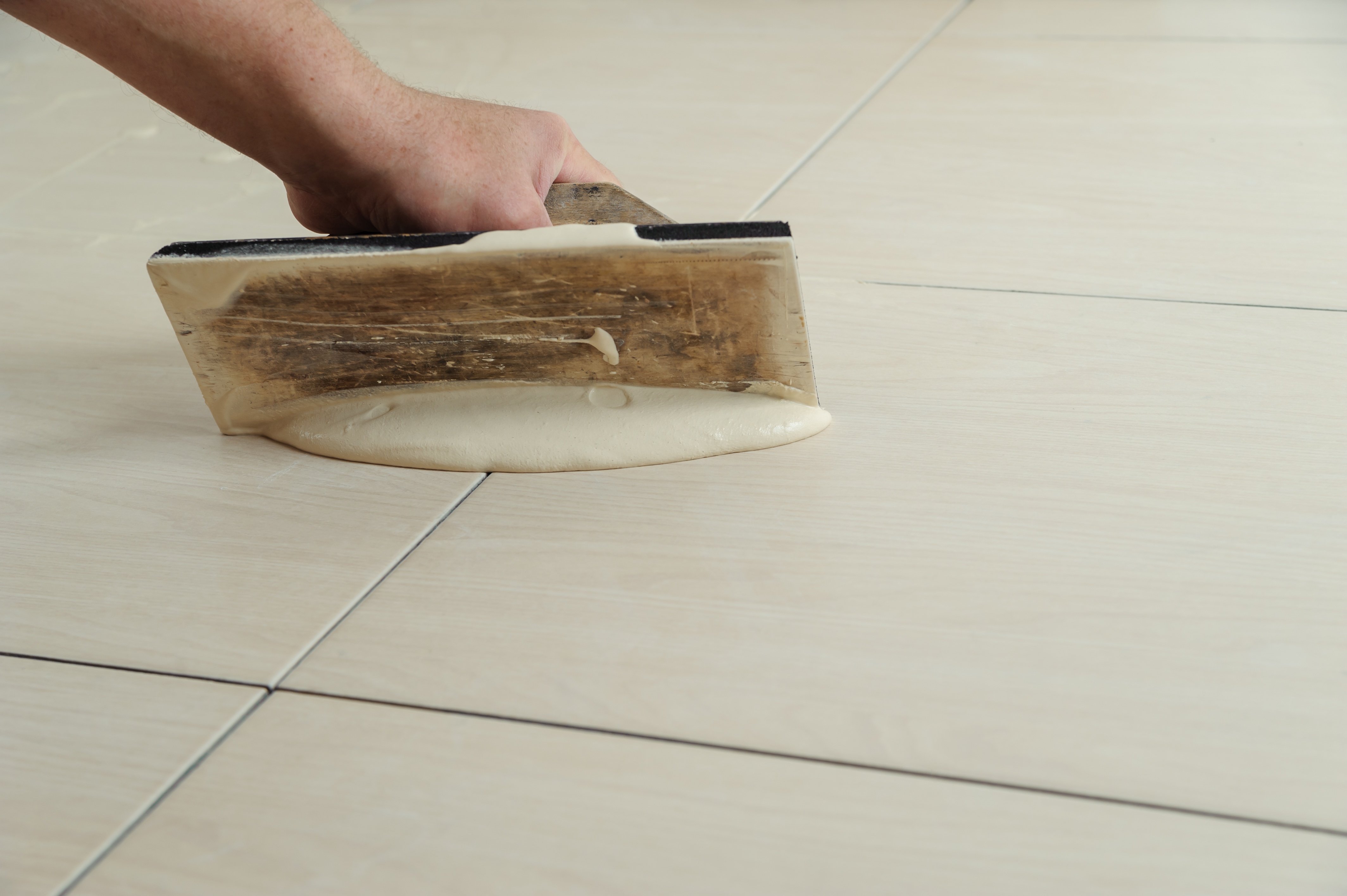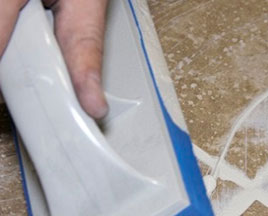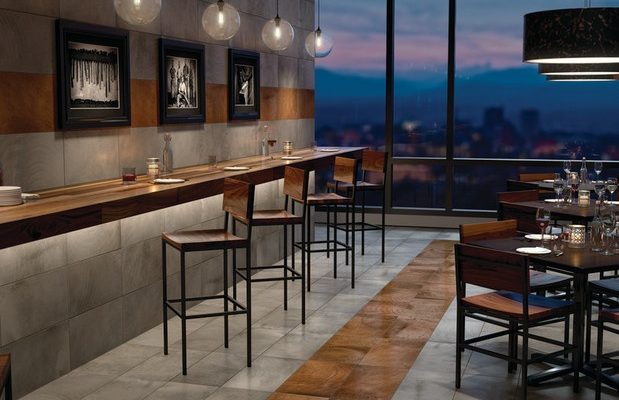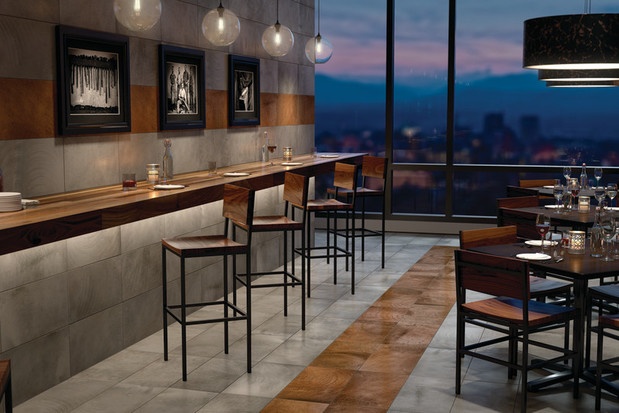Panoramic (on the right) next to a regular sized natural stone slab
Roy Viana, director of Natural Stone and Slab at Daltile said it like this, “we all know what a great performer porcelain is; just translate all those capabilities to a slab and you’ll understand the value of these large porcelain surfaces.”
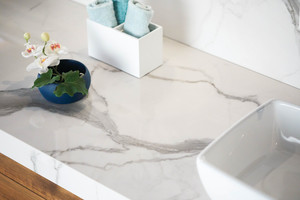
Europe has already been designing with these extra-large format surfaces for a couple of years. Now they’ve hit the American market and they are making a huge impact. They increase the scale and style of porcelain tile on par with natural stone slab and that’s opening up a whole new world.
The Specs
- Two giant sizes: 63 x 126 inches, 64 x 127 inches
- 6 mm and 12 mm thicknesses
- Can be easily cut to customize
What It Looks Like
- Four marble-looks in matte and polished finishes
- Four monochromatic colors in hot urban neutrals
How You Can Use It
- Floors
- Countertops
- Vanities
- Shower walls
- Tub surrounds
- Fireplaces
- Large feature walls
- Exterior cladding
- Outdoor patios
- Outdoor countertops
Cleanability
- Easily cleaned with multi-purpose cleaners
- Fewer grout joints to keep clean
- Low porosity of porcelain makes it stain resistant
Panoramic in Statuario on the walls and vanity
Other Perks
- Withstands heat
- Scratch and chip resistant
- Stain resistant
- Can be installed over existing solid surfaces (with the right preparation)
Get more details about Panoramic Porcelain Surfaces from a Daltile representative or visit a local Daltile Stone Center.

